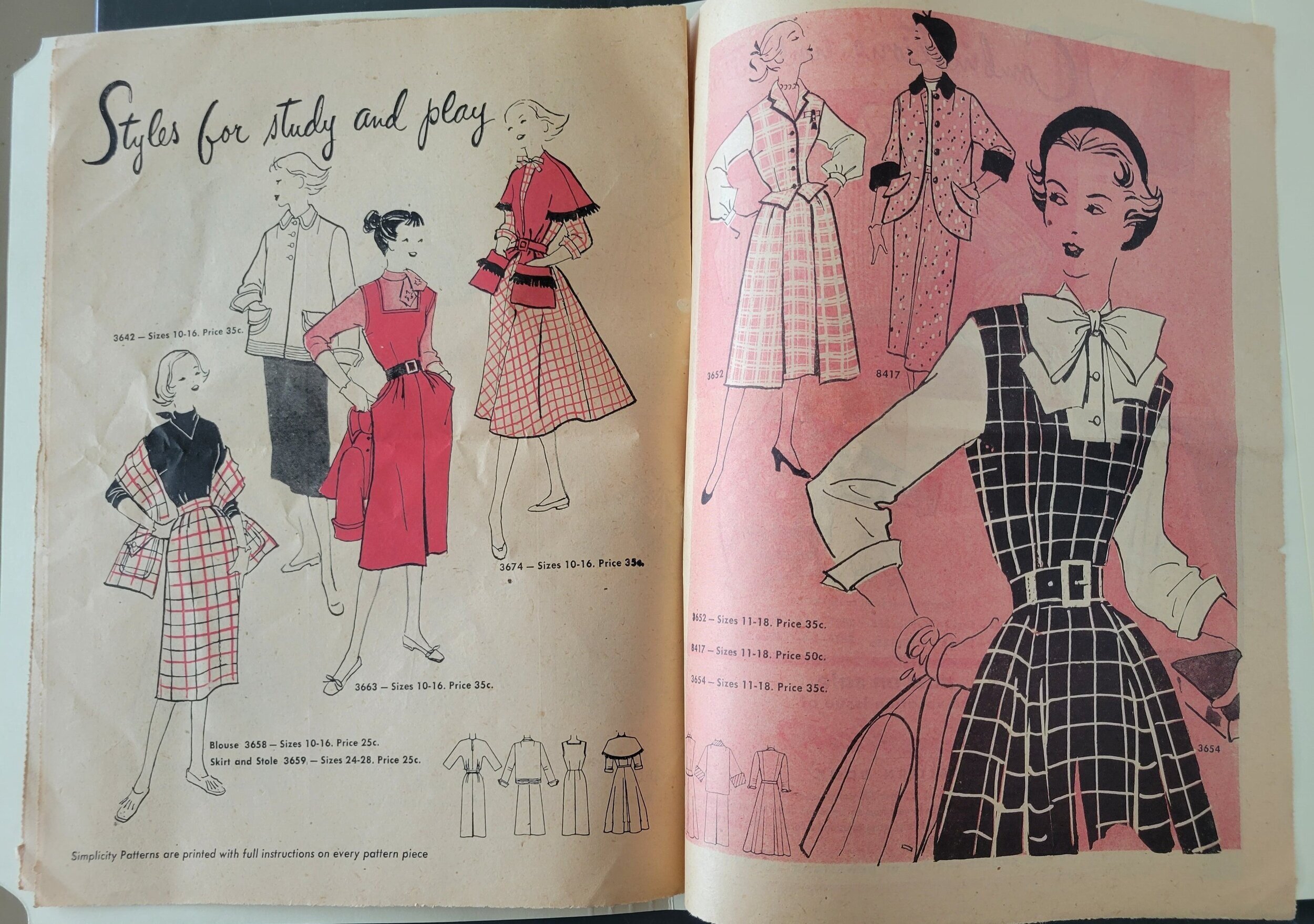For most of human history, people have made their own clothing. William and Ellen Demorest began selling patterns through their magazine, The Mirror of Fashion, in 1860. These patterns were one size and cut to shape. They did not come with any instruction, but customers could buy them “made up” which meant the pattern would come pieced together.
Ebenezer Butterick is credited with creating the first graded (or sized) paper pattern in 1863. Tissue was used to reduce cost and increase mass production of these patterns. Butterick Publishing Co. is also credited with introducing detailed instructions sheets, called a “Deltor”, included with their patterns. These advancements allowed customers to spend less time making adjustments to their measurements and fussing over the steps for each piece.
In the early days of tissue patterns, important markings were made by perforations in the paper. Notches or holes in the blank tissue would indicate where customers should add darts, buttonholes, or pleats. Printed paper patterns were introduced in the late 1940s and were readily adopted by most pattern companies. Today patterns are printed with instructions, markings, and even multiple sizes all on the same tissue paper.
This Simplicity Pattern Fashion Preview is a small pamphlet showcasing new trends for September 1951. Included with the fashion illustrations are the pattern numbers for ordering from Simplicity. One page features school outfits for children and gives short descriptions like “Jane studies history in her ‘grown-up’ suit” and “Kitty plays at recess in her gay calico”.
Simplicity Pattern Co. started in 1927 and sought to create simple, easy-to-follow sewing patterns at a lower price point. They sold unprinted patterns until 1946, when they made the switch to printing.
This men’s shirt pattern is Butterick pattern 6319, also from the 1950s. Ours is sized for a 14½ inch neck and 36 inch sleeve measurements. The pattern description reads: “Collars and cuffs make the difference. A: Regulation collar tops off shirt that sports popular French cuffs, single pocket. B: Spread collar, single button cuffed sleeves. C: Tab collar, button cuff. D: Button down collar.” This pattern cost 35 cents.
76.113B Front
76.113B Back
Here we have a women’s dress pattern from 1959, Advance 9235. This pattern is in a size 16 for 36 inch bust and 28 inch waist measurements. The pattern description reads: “One-piece dress loves many kinds of fabrics ... but because of the graceful kimono sleeves, it looks loveliest if the fabric is one that drapes well. And if a lacy or sheer fabric is used, the dress shoulder completely lined.” This pattern cost 65 cents.
Advance patterns, started in 1933, were sold exclusively at J. C. Penney and were one of a few companies allowed to make Barbie clothing patterns by Mattel. The company was sold in 1966 to Puritan Fashions.
76.113A Front
76.113A Back
Resources
Eastside Heritage Center archives
Admin. (2013, July 22). Vintage patterns. Vintage Fashion Guild. https://vintagefashionguild.org/fashion-history/vintage-patterns/#:~:text=The%20first%20paper%20patterns%20were,graded%20sewing%20pattern%20in%201863.
Wikimedia Foundation. (2020, July 7). History of sewing patterns. Wikipedia. https://en.wikipedia.org/wiki/History_of_sewing_patterns.












